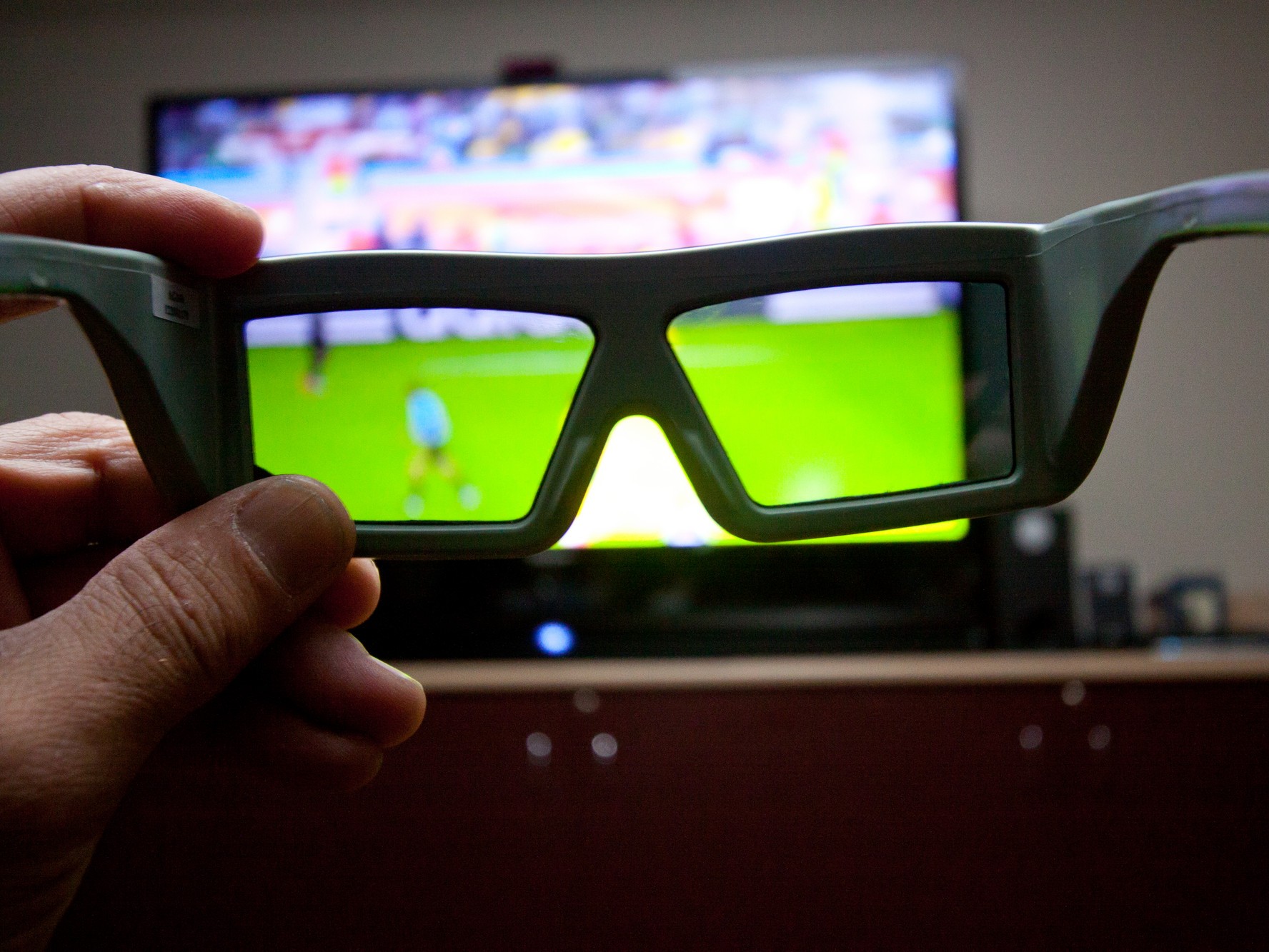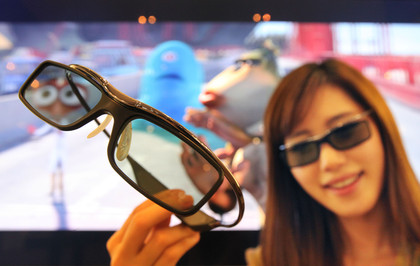Are glasses killing 3D TV?
Cost and inconvenience could be putting off purchases

It's a debate that's sure to polarise, but are glasses killing-off 3D in the home?
Research has found that 3D TV owners in the UK typically own just two pairs of glasses - 13 per cent don't own any - and see the high cost as a major barrier to buying more.
In a survey of 3D TV owners in the UK, researched by Strategy Analytics, just over half agreed that they would buy more 3D glasses for family and friends if prices were lower.
"The glasses issue is very real," says Jia Wu, a senior analyst at the firm. "Naturally enough, people would rather not have to wear them, but a majority of 3D TV viewers are prepared to put up with the inconvenience when the experience and entertainment value justify it."
Having invested in a 3D TV, you'd have thought so, but is the wider public convinced? The cinema-going public seems to be. Global 3D cinema screens represented 19.3 per cent of world box-office receipts in 2010, up from 8.6 per cent in 2009 according to analysis from IHS - that's a jump from US$2.5 billion to US$6.1 billion.
3D cinema is clearly big business and nowhere more so than in the UK, the strongest 3D market in Europe - and the third largest on the planet.
So why have 3D TVs failed to set the flatscreen TV market alight? Sales of 3D TVs rose by just one per cent (from five to six per cent in total) between the fourth quarter of 2010 and the first quarter of 2011.
Get daily insight, inspiration and deals in your inbox
Sign up for breaking news, reviews, opinion, top tech deals, and more.
A US-based report by NPD back in April cited high prices and the need to wear glasses as the biggest problem consumers have with the new tech. "The intent to purchase 3D televisions followed the purchase intent to buy TVs in general," said Ross Rubin, executive director of industry analysis at NPD.
He thinks glasses-free 3D gadgets are more attractive: "The Nintendo 3DS has a low price compared to a 3D television and doesn't require glasses to view the effect. These advantages will also hold true for 3D smartphones entering the market this year."
Passive vs active
A report by SNL Kagan, also in the US, added worries over universal standards as another cause for consumer concern around 3D TVs. That'll be the 'war' between passive and active 3D tech.
The passive charge is led by LG's 'Cinema 3D', which looks set to be joined by both Toshiba's 'Natural 3D' and Philips' 'Easy 3D' in creating 3D TVs that uses cheap glasses, though it's at the cost of Full HD resolution.
Active Shutter 3D TV may offer a Full HD resolution to each eye - a technical advantage that is, trust us, discernable during a 3D Blu-ray movie - but the glasses (when included in-the-box - and costing £100 each) have distinct drawbacks.
Wearing glasses of any type isn't exactly convenient (especially if you also have a prescription pair), largely because the lights are best switched off if you've a 3D TV that uses active tech.
As the shutters come down on the 3D glasses to divvy-up the image between your left and right eye, there's an annoying flicker - especially if there's low-energy fluorescent lighting nearby.
Stephen Gater, CE consumer marketing director at LG, bangs the drum for Cinema 3D: "With the use of lightweight polarised glasses, Cinema 3D can offer a unique viewing experience that's both comfortable and sociable. The polarised battery-free glasses used with LG's Cinema 3D also provide unparalleled wide viewing angles for the ultimate convenience."
Gater also points out that there are seven pairs of 3D specs in each box, and that LG has doubled its share of the 3D TV market since its introduction. That may be so, but it was from a low base - and sales figures for May 2011 showed that Samsung, Sony and Panasonic together claimed 81.5 per cent of the 3D TV market in Europe.
What war?
However, Paul Gray, DisplaySearch's director of Europe TV market research, doesn't think the passive vs active 3D debate is a factor. "We see no effect of this 3D war," he says. "Consumers either don't care, or rightly realise that both types of set can display any 3D content, and the so-called war is largely a slanging match between the two big Korean players."
Meanwhile, Rubin thinks the advent of passive 3D screens actually smoothes the path for wider 3D adoption: "With lighter and less expensive active shutter glasses, a mix of smaller displays, and the entry of passive 3D technologies into the market, the industry is offering more 3D options to consumers."
The other Korean company, Samsung, is firmly in the active 3D camp, and recently joined forces with its Japanese rivals, Sony and Panasonic, to produce 3D glasses that work across various 3D devices and brands.

SLIM FIT: Samsung has made strides in getting Active Shutter 3D glasses as slim as possible
Creating a new universal standard for active 3D glasses under the Full HD 3D Glasses Initiative banner (catchy!), Samsung, Sony, Panasonic and Xpand plan to create 3D glasses with Bluetooth that can be used across 3D TVs, laptops, projectors and even in some 3D cinemas.
They're due to sell in 2012, and be backwards compatible with current 3D TVs - and fully portable between 3D TVs from these brands.
"We hope the expanded collaboration on this 3D standardisation initiative will make a significant contribution toward accelerating the growth of 3D-related products," said Masayuki Kozuka, general manager of Media & Content Alliance Office, Corporate R&D Division, Panasonic Corporation.
That might not happen until glasses-free, or auto-stereoscopic, 3D TVs are available. Toshiba is actually selling its glasses-free GL1 now in Japan, and seems set to follow suite in Europe next year, though others think the era of good quality glasses-less 3D TV is still some way ahead.
LG is sceptical (Gater says: "At this stage, the quality of glasses-free 3D for a large screen does not equal the quality seen in current ranges"), but Panasonic's Product Specialist Steve Lucas is insistent that, "effective glassless 3D systems [are] the ultimate 'goal'."
That's good to hear, but for now even the cost of a 3D cinema ticket seems a bargain compared to a pair of active 3D glasses.
Jamie is a freelance tech, travel and space journalist based in the UK. He’s been writing regularly for Techradar since it was launched in 2008 and also writes regularly for Forbes, The Telegraph, the South China Morning Post, Sky & Telescope and the Sky At Night magazine as well as other Future titles T3, Digital Camera World, All About Space and Space.com. He also edits two of his own websites, TravGear.com and WhenIsTheNextEclipse.com that reflect his obsession with travel gear and solar eclipse travel. He is the author of A Stargazing Program For Beginners (Springer, 2015),
